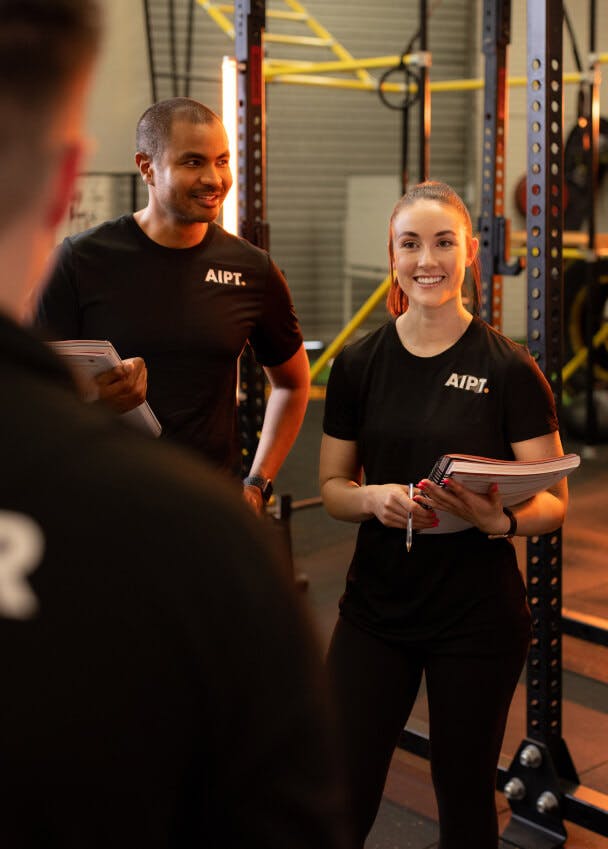06 Feb 2019
How to Develop Effective and Engaging Fitness Programs
Ok! I am motivated and ready to go, I have a goal and some sort of idea of what I need to do to reach my fitness goals. I need to lift weights, lose weight, I need to get my heart rate elevated that should be the ingredients to success? Right?
We all have at some time had this internal conversation to ourselves about what a training program should look like, but deep down know we do not have our ‘ducks in a row’ with a balanced and effective exercise program.
So where do you start? And what goes into a balanced workout plan?
The first step is to set a realistic goal, and to do this may require some research and time preparation. Using the S.M.A.R.T principle can help to identify whether your goal is a realistic one and assist in modifying elements to make it realistic if the initial framework is not appropriate.

Here is a simple example of how to use the principle:
S: Specific – Weight loss is not a specific goal, knowing the amount of weight and how your body will transform once you initiate a program will set you up in setting a realistic, specific goal. For example, let's say you want to lose 10kg of body fat weight.
M: Measurable – this step has two aspects. The first one is the starting point and the second is the checkpoints along the way to monitor progression. In the first step, you are conducting health and fitness tests to help record your current health status and identify any limitations that may hinder your progress. As the example goal we have set is weight loss, will we need to measure your weight, your body fat percentage, perform some girth measurements and perform some basic mobility tests, which will assist in selecting the correct resistance exercises and overall establish your fitness level. The second and following steps are the monitoring of the measurements, which should be performed regularly such as every three weeks. Personal trainers will use normative data to track safe progression. With that in mind the average weight that can be expected to lose 800g to 1kg per week. So how long will this goal take to achieve? Let's look at that in a further step.
A: Achievable – this step outlines what you are going to do to reach your goal, and requires potentially the most time in preparation. To set a realistic path to success, you have to review your weekly routine, work, family, social and other commitments that need to be factored into your calendar when selecting the frequency of physical activity per week. For example, you may identify that you have 30 minutes, four days a week to perform your workout program.
Another part of the puzzle of the steps you need to take is your food plan. Accessing the Australian Dietary Guidelines and reviewing the dietary guidelines for selecting the correct amounts of food from each food group and portion sizes, based on your age and gender. With this information, you can plan the type of meals you will prepare in advance and create variety.
R: Realistic – The review process happens at this stage. I actually do this step last, not in the order this principle is laid out. At this step, you are confirming whether the achievable actions you have put into your plan are doable or consistent with your day to day lifestyle. In the initial stages when motivation is high, people make the common mistake of performing more exercise sessions a week than their schedule allows. This has a knock-on effect of burning out too quickly and can discourage your adherence to your fitness goals. It’s better to start slow and build a constant regular pattern than to start with unrealistic expectations of how many sessions and the type of exercises you can perform and hit a plateau both mentally and physically.
T: Timely – setting up this step in the process again requires a little research or discussion with a fitness professional to gain some understanding. This stage deals with the time frame of the goal, which can be already set for you, such as a set date of a fun run or event which is two months away. Referring back to the example goal we have been using in this principle, the 10kg weight loss goal. It was mentioned in the MEASURABLE step that a person can expect to safely lose 800g to 1kg of body fat a week, going off normative data. With this information in mind now, let's look at a potential time frame of achieving this goal if you maintain the achievable actions you planned out.
800g – 1kg weight per week = goal weight loss 10kg
1kg a week = 10 weeks
800g = 12.5 weeks
So we are looking at a potential time frame of 10 to 12.5 weeks.
Now that you have set the overview plan let's look into the detail of the exercise training sessions and discuss some key ingredients to a successful fitness program. The frequency of sessions you can perform a week will determine the intensity of each session. If you can only perform 2-3 sessions per week, then you will be required to work between moderate intensity and high intensity. Compared to if you can perform 4-5 sessions per week, then you have to plan intensities at every level low, moderate and high. The reason for this is the body requires longer periods to recover and grow after high-intensity sessions compared to moderate and low-intensity sessions. The underlying factor to any mention of intensities no matter what your fitness level is that everything you undertake is completed with control.
When doing resistance or strength training what exercises do I choose, and in what order should they be performed, I hear you ask? With the limited time, we all have to exercise selecting the most effective exercises to gain strength, burn more calories is a must. I suggest choosing compound (multi-joint – multi-muscle) exercises as a bulk of the exercises you select in an exercise session. Compared to isolation exercises such as bicep curls, a seated row, which uses the bicep will not only burn more calories but assist in firming your arms. No matter what fitness level you are keeping your heart rate elevated for longer within the session will also contribute to burning more calories and increasing fitness levels. There are two formats of programming I would highly suggest to help get more for your time is a circuit and super setting training. The fundamental definition of circuit training is performing a minimum of 3 resistance and/or cardiovascular exercises in a pattern with work and rest efforts appropriately selected to suit your fitness level such asF45, Crossfit, 12 Round fitness, Arena, MetaFit, and predominately most group exercise classes are this format,
The second format style is super setting, which is simply pairing two resistance exercises (preferable opposing muscles) together with little to no rest and repeating. An example is a push up (Chest exercise) and seated cable row (Back exercise).
Lastly, unless you have any postural concerns, it is very important that you target every body part equally. This helps to keep the body moving efficiently and reduces the onset of adopting poor posture such as rounded shoulders because chest and shoulder exercises were over-prescribed in your training sessions.
I hope these little tidbits have provided some fundamental understanding of what goes into planning an overall workout training program and into each training session to help you recover well, move you toward your goal and plan smart, effective and challenging exercise sessions.
Interested in becoming a Personal Trainer? Pursue your dream career with our Complete Personal Training Course. Enquire now, and one of our friendly Careers Advisors will be in contact with you soon!
Related Articles

Maximise the Rest of 2025 With Your Fitness Career
Finish 2025 strong. Learn how personal trainers can grow their fitness career, attract more clients and upskill before the final campus intake closes.

Why becoming a Group Trainer is the ultimate side hustle.
Discover why becoming a group fitness trainer is the ultimate side hustle: a flexible way to earn extra income, stay fit and inspire people around you.

Industry Supplier
Proud member of

© Australian Institute of Personal Trainers | RTO Number 32363
